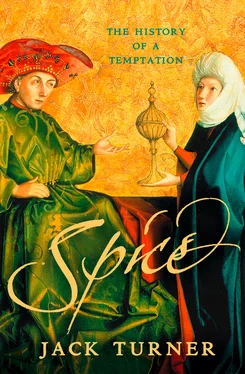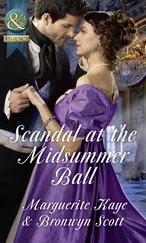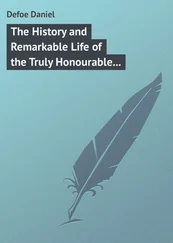And yet for the disappointed king this was of little interest – it was too recherché, too elevated by far. Short of cash, greedy for more, Ferdinand was not amused by his admiral’s flights of fancy. And who can blame him? Columbus had promised earthly gold and spice but instead delivered meandering reworkings of old myths and fairy tales. With every year he seemed to be losing an already shaky grip on reality; he was becoming a crank. More galling still, between letters from his dreamy admiral Ferdinand was receiving altogether more down-to-earth missives from his Portuguese son-in-law, from whose boasting pamphlets of spiced Indian triumphs the booksellers were turning a tidy profit.
But if the Admiral of the Ocean Sea ended up sailing down spice routes of the imagination, discovering a new continent by a happy accident, these were not the only leads he might have followed. For if his fancy eventually led him far from reality, far out of this world, others took more earthy associations of spice for inspiration. To many of Columbus’s contemporaries, spices were anything but paradisal, not so much on account of their origins as due to the uses to which they were put. Here the associations, above and beyond the pungent smell of Mammon, concerned very much more body than spirit. To those of less visionary inclinations than Columbus, it was not paradise that spices evoked so much as Babylon.
Half a millennium after Columbus laboured in vain, only vestiges of the former magnetism of spice remain: the twin poles of attraction and repulsion. But if the aura has long since faded, the continuing interest of the subject lies precisely in the complexity, the contradictory quality of the mixture: of sweetness and astringency; of hunger laced with misgivings; of recommendations and recipes hedged about with reservations. These were, moreover, tensions that even in Columbus’s day had co-existed for centuries. Long before he set off on his optimistic blunder, there were others who pursued not only the Indies and their spices, but also the paradises and Sirens that hovered about them; and others who decried them with equal vigour. This was an appetite of far greater antiquity than even Columbus could imagine, and pregnant with greater ambiguities than he would admit.
* Mastic is the resin of Pistacia lentiscus, an evergreen shrub native to the eastern Mediterranean, much sought after in medieval times for use in dyes, perfumes, varnishes and as a flavouring. The major producer of mastic was the Greek island of Chios, where Columbus’s Genoese countrymen acquired the spice.
* Not everyone was convinced. Some present at the Saló believed that the Indians were Moors, and that Columbus had sailed somewhere down the coast of Africa.
* Contacts may well have been still older. Excavations of Mesopotamian cities of the third millennium BC have turned up specimens of the Indian chank, a conch shell found only in the coastal waters of southern India and Sri Lanka.
* A quintal is a commercial hundredweight.
* There may have been earlier Spanish efforts to sail to the Spice Islands, but they were stymied either by the Spanish crown’s unwillingness to confront Lisbon or perhaps by Portuguese machinations. As early as 1512 the archbishop of Valencia had promoted a plan whereby the Spanish would sail east, contest Malacca, and take possession of the Moluccas.
* The third ship, the Concepción, had been abandoned and burned in the Philippines, ‘because there were too few men’.
* Incidentally, this was the first occasion when the English used lemon juice to ward off scurvy.
* The connection has long been a source of confusion for the unwary, and fodder for a good deal of sensationalist historicising, none of which should be taken too seriously. There was little more to the swap of the two islands than belated recognition of facts on the ground. At the time of the treaty’s signing the English had occupied Manhattan, and the Dutch had taken Run. The matter was not much more complicated than that.
* Galangal is the root of Alpinia officinarum, a native of eastern Asia related to ginger, with a similar though slightly more astringent taste. Still popular in Thai cuisine, it was widely used in Europe in the Middle Ages.
* Zedoary is an aromatic tuberous root of one of several species of Curcuma, related to ginger and turmeric. It was widely used in medieval medicines and cuisine.
* He took along a converted Jew who spoke Hebrew, Arabic and ‘Chaldee’ (Persian).
II Palate
The beautiful vessels, the masterpieces of the Greeks, stir white foam on the Periyar river … arriving with gold and departing with pepper.
The Lay of the Anklet, a Tamil poem of c. AD 200
From 11 to 8 BC the Romans’ largest military camp in the land they knew as Germania stood on a well-defended site by the banks of the Lippe river, near the present-day town of Oberaden. Today the region lies in the middle of the huge industrial sprawl of the Ruhr valley, but when the Romans arrived this was a wasteland dividing the barbarian and the civilised worlds. Behind were fields and towns; ahead, bogs and forests. It was to push that division outward that the Romans were here, and this, after three years of fighting, they did. The fearsome tribesmen of the Sugambri were ground down, relocated or put to the sword. The legions moved on to new wars and new frontiers. The camp on the Lippe was abandoned and left to an all but total obscurity, uninterrupted but for a brief flurry of interest some two thousand years later with the visit of a team of German archaeologists. Picking through the kitchen scrapheap, they found olive pits, coriander seeds and black pepper.
That the centurions hankered for a little variation from the dreary German diet of roasted meat and porridge is no great surprise. In fact they were far from alone in enjoying their exotic seasonings, even in the outermost bogs and forests of the barbarian north. In England a century or so after Christ, soldiers stationed at the fort of Vindolanda regularly seasoned their meals with Indian pepper as they peered over the battlements of Hadrian’s Wall at the Caledonians; some of the inscribed wooden tablets recording their purchases still survive. Such concrete evidence confirms a fact that many Roman writers mention, but one that in the absence of physical evidence seemed barely credible: that before the time of Christ, a traffic in spices stretched across the Indian Ocean, from far beyond the easternmost reaches of imperial power, north and west across Europe to the outer reaches of the Roman world. And therein lay the roots of a culinary tradition that would endure long after the legions had crumbled and Rome itself lay in ruins.
The Romans were not the first Europeans to eat pepper, but they were the first to do so with any regularity. Locally-produced seasonings had been used in the Mediterranean world since at least the time of the ancient Syrian civilisation of Mari, late in the third millennium BC, where inscriptions on clay tablets record the use of cumin and coriander to flavour beer. When Rome was still a village, Greek cooks knew a host of different seasonings. Cumin, sesame, coriander, oregano and saffron are all mentioned in Greek comedies of the fourth and third centuries BC, but as yet no Eastern spices. It was not that the spices were unknown, nor that no one had yet thought to eat them, but rather that their exorbitant cost rendered them too precious for consumption by all but the very wealthy. There is a fragment by the Attic poet Antiphanes dating from the fourth century BC: ‘If a man should bring home some pepper he’s bought, they propose a motion that he be tortured as a spy’ – from which not much can be extracted other than a vague allusion to high cost. Another fragment contains a recipe for an appetiser of pepper, salad leaf, sedge (a grassy, flowering herb) and Egyptian perfume. The philosopher Theophrastus ( c .372 – c .287 BC) knew pepper, but the context makes it clear that the spice is still the concern of the apothecary, not the cook.
Читать дальше











